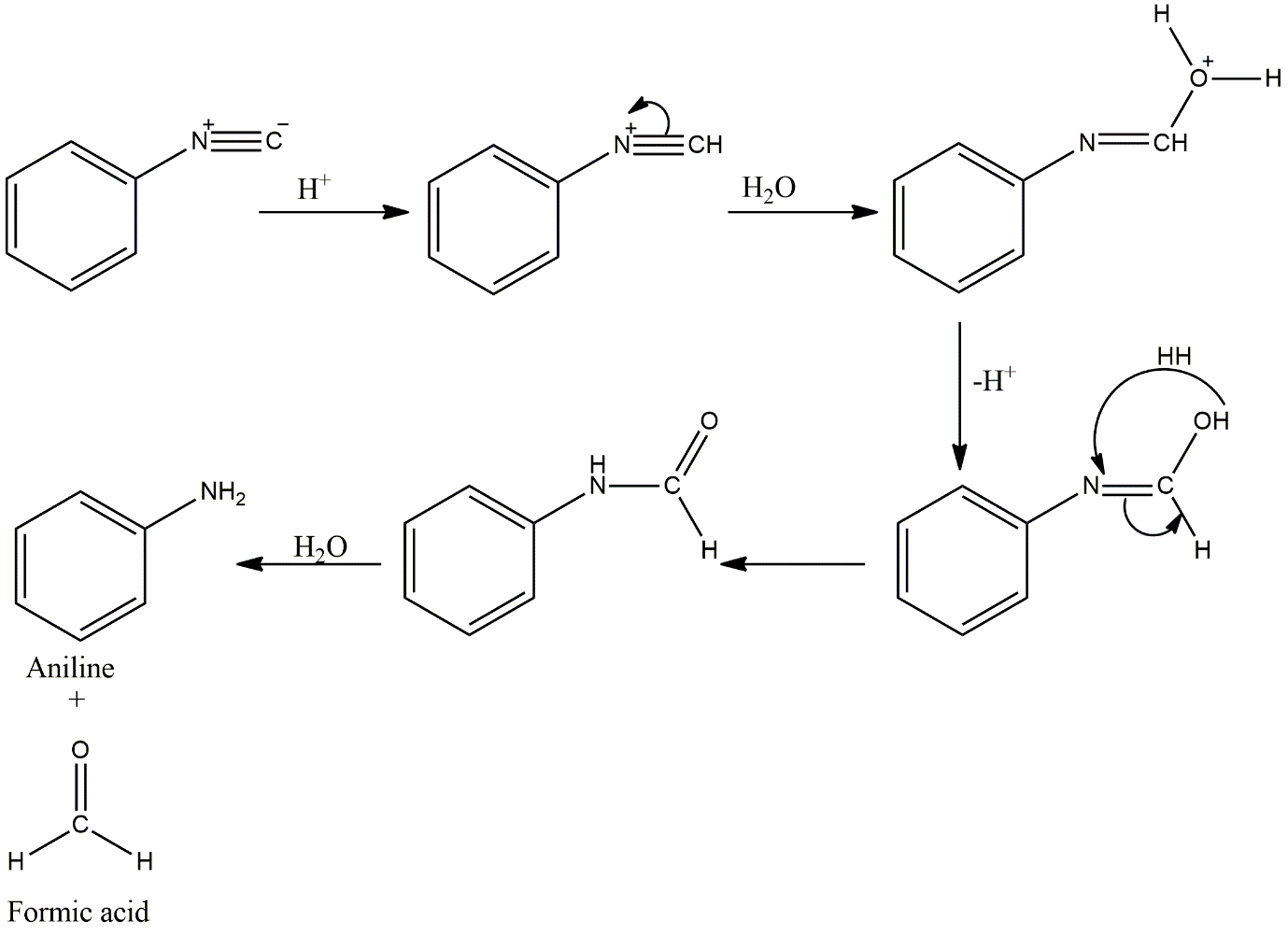
Answer
101.1k+ views
Hint: Hydro means water and lysis mean splitting, which means the hydrolysis reaction works with water. Here water splits into hydronium ions (protons) and hydroxyl ions, which are then attached to another molecule of the system.
Complete Step by Step Solution:
For this, a hydrolysis reaction should be done to check which one is liberating ammonia. The above options are having different functional groups, so all may have different steps of reactions.

Image: Hydrolysis reactions
After hydrolysis, only phenyl isocyanide is not liberating ammonia. Instead, it has formic acid as a by-product. And also, it requires an acidic condition for hydrolysis. This is because they both are charged. So, they need an acidic condition to accelerate the reaction.
So, the option D is correct.
Additional Information: Acetanilide and acetamide, both are having amide functional groups. Their carbon is more electrophilic because of electronegative atoms adjacent to it. On hydrolysis, hydroxyl ions will attach to this carbon. And hydronium ions to the nitrogen of amide functional group as it is electronegative. This results in breaking the bond between carbon and nitrogen of the amide functional group. Similar steps apply to acetonitrile. Acetonitrile has a cyanide functional group. There is again an electronegativity difference between carbon and nitrogen which will help in hydrolysis.
Note: Complete knowledge of hydrolysis is necessary. For ease, try memorising the functional groups and the generated electronegativity difference. This will help in reactions to understand which bond is susceptible to break.
Complete Step by Step Solution:
For this, a hydrolysis reaction should be done to check which one is liberating ammonia. The above options are having different functional groups, so all may have different steps of reactions.

Image: Hydrolysis reactions
After hydrolysis, only phenyl isocyanide is not liberating ammonia. Instead, it has formic acid as a by-product. And also, it requires an acidic condition for hydrolysis. This is because they both are charged. So, they need an acidic condition to accelerate the reaction.
So, the option D is correct.
Additional Information: Acetanilide and acetamide, both are having amide functional groups. Their carbon is more electrophilic because of electronegative atoms adjacent to it. On hydrolysis, hydroxyl ions will attach to this carbon. And hydronium ions to the nitrogen of amide functional group as it is electronegative. This results in breaking the bond between carbon and nitrogen of the amide functional group. Similar steps apply to acetonitrile. Acetonitrile has a cyanide functional group. There is again an electronegativity difference between carbon and nitrogen which will help in hydrolysis.
Note: Complete knowledge of hydrolysis is necessary. For ease, try memorising the functional groups and the generated electronegativity difference. This will help in reactions to understand which bond is susceptible to break.
Recently Updated Pages
Write a composition in approximately 450 500 words class 10 english JEE_Main

Arrange the sentences P Q R between S1 and S5 such class 10 english JEE_Main

Write an article on the need and importance of sports class 10 english JEE_Main

Name the scale on which the destructive energy of an class 11 physics JEE_Main

Choose the exact meaning of the given idiomphrase The class 9 english JEE_Main

Choose the one which best expresses the meaning of class 9 english JEE_Main




